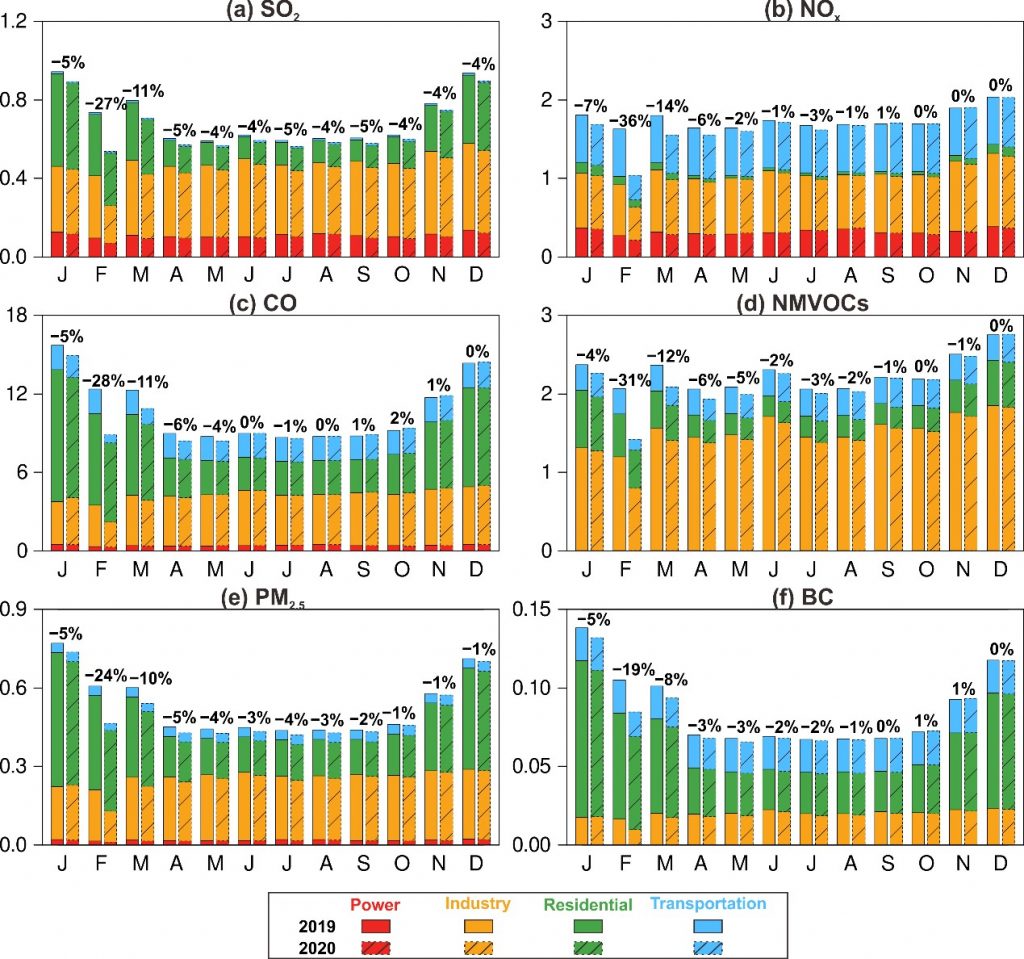2021-06-22 | Bo Zheng
The COVID-19 pandemic in 2020 had an unprecedented impact on human society and the natural environment. The lockdown measures during the pandemic and the economic rebound afterward have reshaped the economic activities of human society, driven short-term fluctuations in anthropogenic emissions, and altered the composition of the atmosphere and air quality. However, studying the dynamic response of the atmospheric environment to economic activities and anthropogenic emissions is hampered by the anthropogenic emission inventories that typically have a 1-2 year lag due to the data availability, which limits the timely development of relevant researches.
Aiming to solve this problem, the MEIC team has established a near-real-time emission tracking framework from both top-down and bottom-up perspectives. Our previous work inferred the daily changes in China’s NOx and CO2 emissions during the COVID-19 lockdown period in 2020, which has led to a research article published in the journal of Science Advances. Then we further quantified the changes in China’s monthly emissions of air pollutants in 2020, which has been published in Earth System Science Data recently. These two studies comprehensively assessed the dynamic changes in China’s anthropogenic emissions during the COVID-19 pandemic and provided timely updated emissions data for studying the impact of COVID on the atmospheric environment.

Our results suggest that the COVID-19 lockdown has reduced China’s anthropogenic emissions substantially between January and March in 2020, with the largest reductions in February. Emissions of SO2, NOx, CO, NMVOCs, and primary PM2.5 were estimated to have decreased by 27%, 36%, 28%, 31%, and 24%, respectively, in February 2020 compared to the same month in 2019. The reductions in anthropogenic emissions were dominated by the industry sector for SO2 and PM2.5 and were contributed to approximately equally by the industry and transportation sectors for NOx, CO, and NMVOCs. With the spread of coronavirus controlled, China’s anthropogenic emissions rebounded in April and since then returned to the comparable levels of 2019 in the second half of 2020. In 2020, China’s annual emissions of SO2, NOx, CO, NMVOCs, and primary PM2.5 have declined by 7.1%, 5.6%, 4.8%, 5.3%, and 5.5%, respectively, compared to the emissions in 2019. The air quality simulations based on our estimated emissions reproduce the spatial-temporal variation in the concentrations of PM2.5, SO2, NO2, and CO from 2019 to 2020.
China’s anthropogenic emissions data for 2019 and 2020 can be downloaded from the link below. If you need gridded emissions data for air quality model simulations, please contact Bo Zheng (bozheng@sz.tsinghua.edu.cn).
Data download:
China’s_Monthly_Emissions_2019-2020.xlsx
Data citation:
Zheng, B., Zhang, Q.*, Geng, G., Chen, C., Shi, Q., Cui, M., Lei, Y., and He, K.: Changes in China’s anthropogenic emissions and air quality during the COVID-19 pandemic in 2020, Earth Syst. Sci. Data, 13, 2895–2907, doi: 10.5194/essd-13-2895-2021, 2021.
